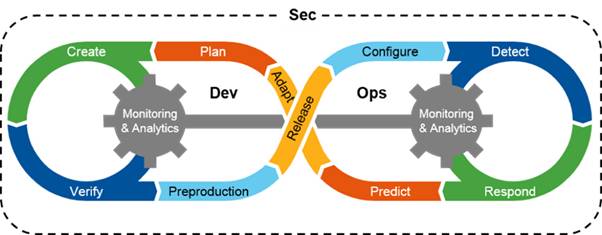
To take advantage of the tech-savvy world of today, many businesses are moving their operations to online platforms to appeal to a larger audience thus growing their customer base. However, as more and more businesses go online to serve their customers digitally, the market is witnessing fierce competition.
This is good news for users as they are now getting a wider range of options to choose from. The flip side of the coin is this keeps businesses on their toes on how to maintain client retention, reduce churn and grow their consumer footprint.
The key to success for any software-based business in today’s time is customer engagement—and by releasing regular updates with enhanced features every few weeks, businesses are successfully doing just that.
Nevertheless, releasing new versions of software applications with the latest features in record time is challenging. This requires every release cycle to be short and precise.
So exactly how are these short and precise releases done? The answer is through Continuous Integration and Delivery (CI/CD).
What is Continuous Integration and Delivery?
In a nutshell, Continuous Integration and Delivery is not just where the software development cycle is shortened but it is done so with cross-team input for precision and utmost efficiency.
The advanced technology of Continuous Integration and Delivery allows the software development, testing, and maintenance teams to work simultaneously with the business analysts, such that small updates are made frequently. The release cycles are dynamic, which means the development and operational activities go hand in hand to give a continuous delivery of the latest software version to the end-users.
Since the developmental and operational activities go hand in hand in the CI/CD approach it is often termed as DevOps. The DevOps practices go well with the Agile Methodologies of Software Development, helping the businesses optimize their software deliveries.
With time as the data threat and cybersecurity concerns are rising, businesses have also included Security as a part of their CI/CD practices, revising DevOps to DevSecOps. Through the integration of security practices such as DAST (Dynamic Application Security Testing)

Source: GSA Tech Guides
What is the role of Test Automation in Continuous Integration and Delivery?
As the software gets more complex with time as it is ramped up with advanced features through CI/CD, Test Automation becomes essential to keep the changes intact and precise in the short timeframe given. Since Test Automation generates faster, more consistent, accurate test results—despite a high volume—it also makes the QA process more agile by saving time and resources.
By putting in place an optimized Test Automation suite, you can ensure that your software application is delivered in record time while maintaining the high quality standards through a fast, yet scalable, quality analysis process.
How does Machine Learning fit in?
To get the most performance of your Test Automation Suite, it is essential to ensure continuous improvement in the system. Using Continuous Integration and Delivery will invariably make your system more complex. However, coupled with Machine Learning will allow the software system to improve its performance based on the inputs from the environment.
By using advanced ML techniques like Deep Learning, and Natural Language Processing, the software can learn and apply the learned knowledge in the future to optimize the overall performance. This can be done in tasks such as code compilation, finding defects, troubleshooting, detecting clones and redundancies, etc.
The system improves continuously by taking inputs from the past data. Thus, the predictive analysis is more accurate in comparison to the traditional hit and trial technique where the tester uses their due diligence each time to adjust the testing suite. The data metrics produced by the past test runs are used to analyze and improve the test automation system in place.
With the use of Machine Learning techniques, the overall process becomes more efficient in many ways and can adapt the dynamic nature of the changing business requirements in the CI/CD landscape.
Related: See how using Data Visualization can further improve your Test Experience.
The Way Forward
The Continuous Integration and Delivery approach has been pivotal in fulfilling the exceeding demands of customers, but it does need a diligent Test Automation Suite to keep things moving – one which uses advanced technologies like Machine Learning, AI, and Data Visualization. .
BrickRed Systems offer Automation and Performance Testing Solutions that easily integrate with your existing system and help you implement CI/CD into your software development lifecycle. Through a multi-level testing approach, BrickRed Systems can help your business achieve your optimization goals in a very dynamic and continuous manner.
By using Machine Learning, AI, and Data Visualization to create reports and implement recommended improvements on a regular basis, BrickRed Systems makes sure that your software development system aligns itself with the evolving business requirements and users’ expectations to deliver optimum results.
Try using Machine Learning to overhaul your existing test automation suite for matching it with the dynamic evolution of ever-changing business requirements via Continuous Integration and Delivery. You will not be disappointed!

Ravi Choudhary
April 1, 2023sd